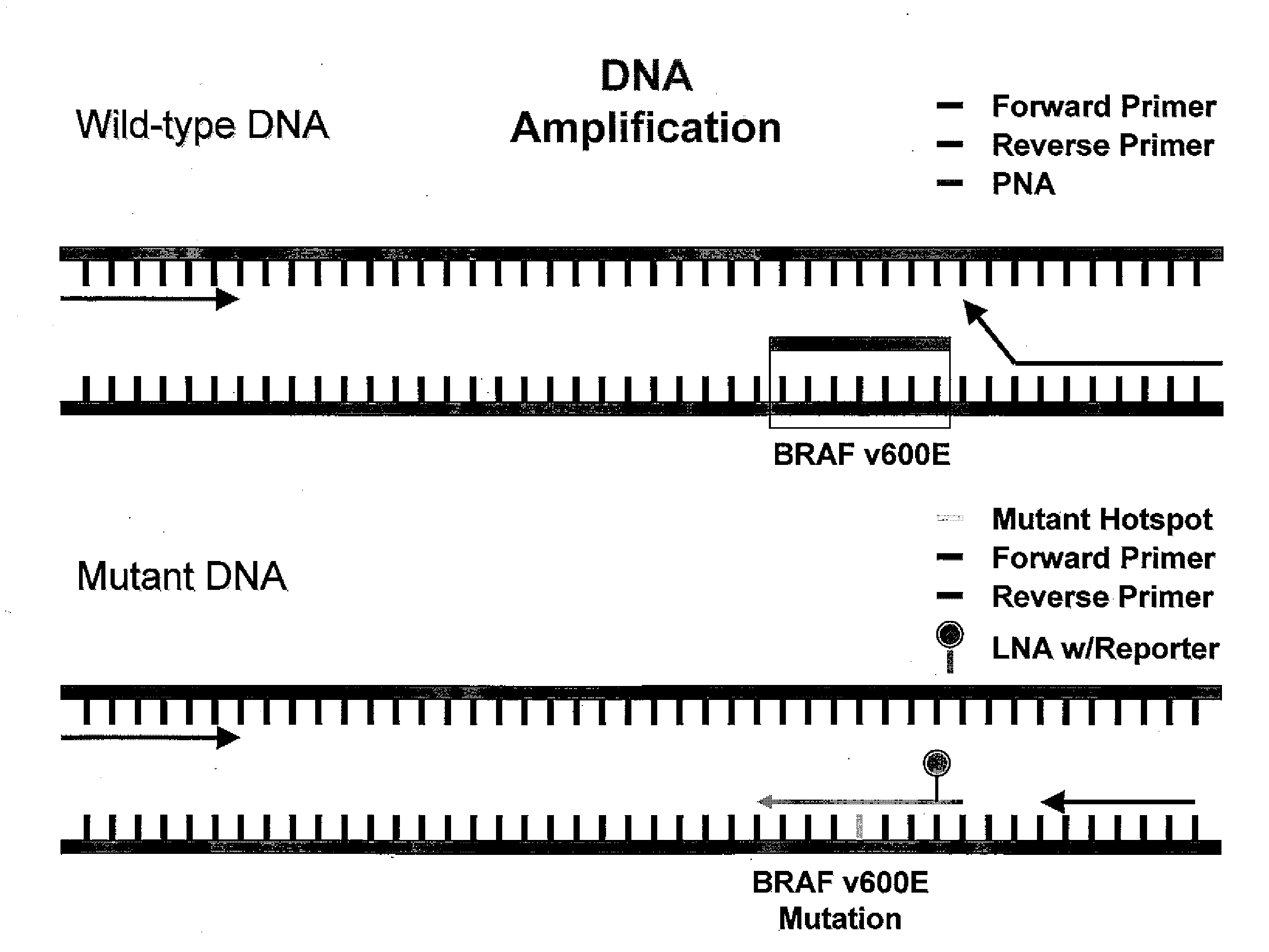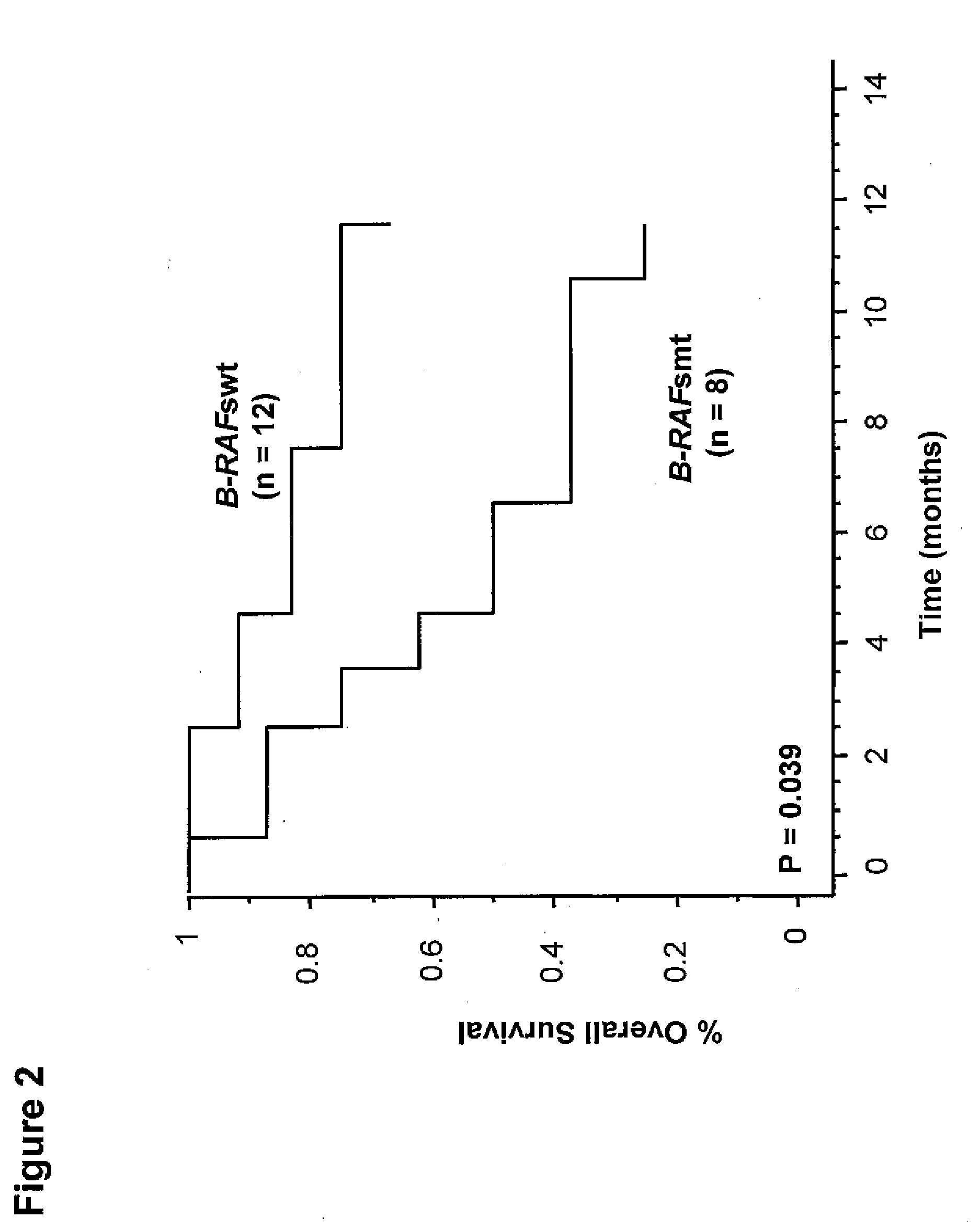Utility of b-raf DNA mutation in diagnosis and treatment of cancer
a dna mutation and cancer technology, applied in the field of cancer management, can solve the problems of significant morbidity, major side effects of adjuvant therapy for melanoma, and difficult diagnosis and treatment of cutaneous melanoma, and achieve the effect of reducing the probability of survival
- Summary
- Abstract
- Description
- Claims
- Application Information
AI Technical Summary
Benefits of technology
Problems solved by technology
Method used
Image
Examples
example
Abstract
[0046]Purpose. Somatic B-RAF gene mutation has been identified in many malignancies and detected at a high frequency in cutaneous malignant melanoma. However, the significance of the B-RAF mutations (B-RAFmt) in terms of its prognostic and predictive capabilities for treatment response or disease outcome is not known. We hypothesized that circulating serum B-RAFmt (B-RAFsmt) at V600E detected in serum predicts response in melanoma patients receiving concurrent biochemotherapy (BC).
[0047]Experimental design. A real-time clamp quantitative RT-PCR (qRT) assay was designed to assess B-RAFsmt by PNA clamping and LNA hybrid probe. Normal (n=18) and AJCC stage I-IV melanoma patients (n=103) were evaluated. These included stage 1V patients (n=48) with blood drawn before and after BC. Patients were classified as BC responders or non-responders. Responders (n=24) had a complete or partial response following BC; non-responders (n=24) developed progressive disease.
[0048]Results. Of the ...
PUM
 Login to View More
Login to View More Abstract
Description
Claims
Application Information
 Login to View More
Login to View More - R&D
- Intellectual Property
- Life Sciences
- Materials
- Tech Scout
- Unparalleled Data Quality
- Higher Quality Content
- 60% Fewer Hallucinations
Browse by: Latest US Patents, China's latest patents, Technical Efficacy Thesaurus, Application Domain, Technology Topic, Popular Technical Reports.
© 2025 PatSnap. All rights reserved.Legal|Privacy policy|Modern Slavery Act Transparency Statement|Sitemap|About US| Contact US: help@patsnap.com



